Projects
Salem Harbor Water Clarity
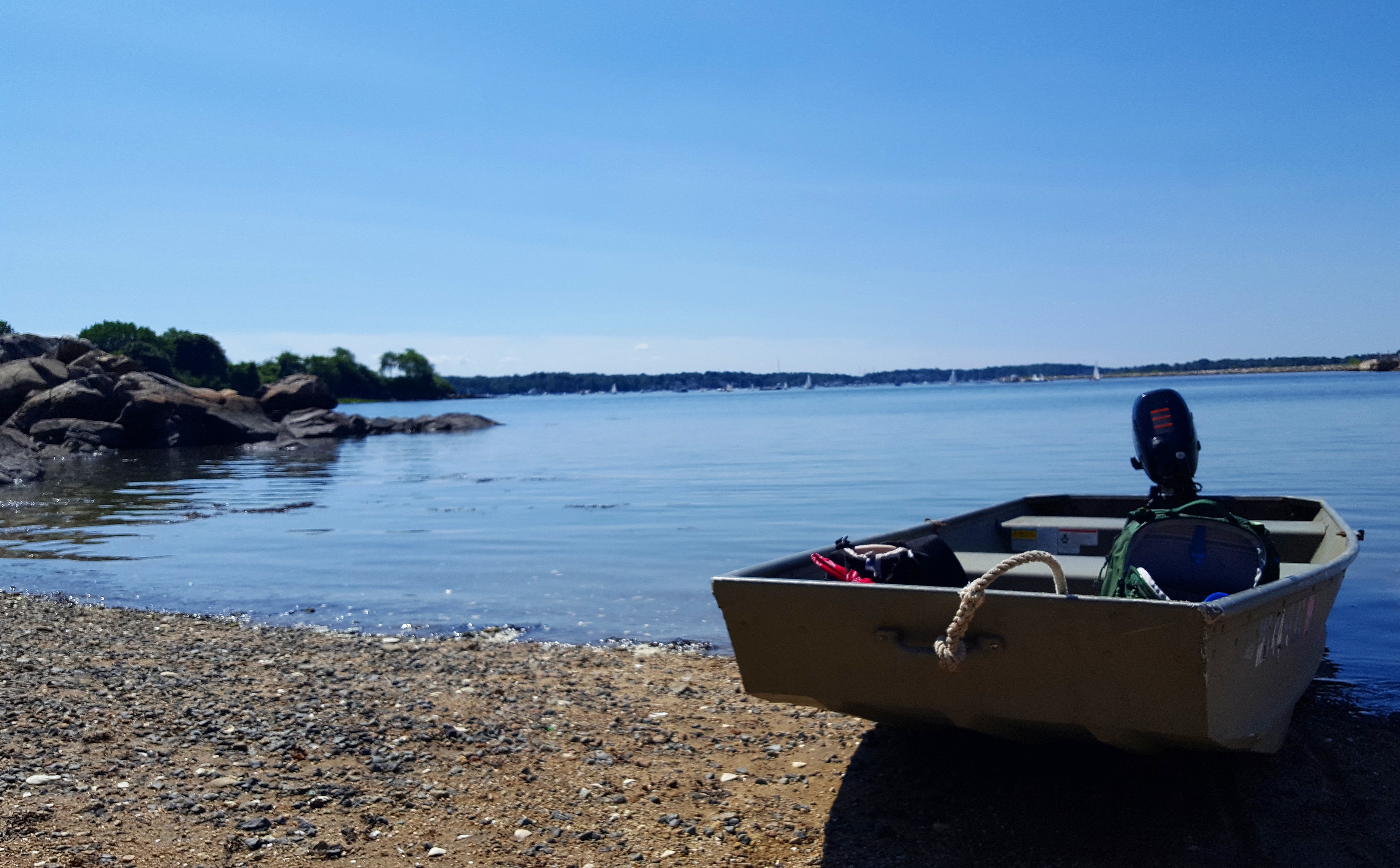
From 2012-2014, in collaboration with Salem Sound Coastwatch (SSCW), with funding from MassBays and Massachusetts Environmental Trust (MET), we investigated the causes of decreased water clarity in Salem Harbor using geochemical and geophysical tools. We utilized monitoring buoys in the harbor to observe water quality parameters, as well as sampling and analyzing particulate matter from potential source areas and from the harbor to understand from where the particulate matter may be originating. Our results illustrated a complex system, but the dominant source of particulates in the harbor was phytoplankton.
We were interested to find the type of phytoplankton decreasing water clarity and to better understand the complex system of nutrient inputs and water chemistry that would lead to algal blooms. From 2017-2019 we conducted research to further this project by collecting more data on increased turbidity levels, as well as extensive water quality, nutrient, and phytoplankton data. The further application of several statistical analyses and nutrient models highlighted dinoflagellates, more specifically Heterocapsa spp. as the main plankton. This species is found in nitrogen-limited or phosphorus-rich environments. We also defined the spatial variability within the water quality of the harbor, pointing to the Forest River area at the southern end of the harbor as the area of most concern with respect to water clarity and dinoflagellate blooms.
Two new grants were just obtained in 2024 to further this research and understand the nutrient cycle, specifically to quantify the phosphorus and nitrogen sequestered in the sediments of Salem Harbor and to understand the seasonal variability of phase changes of these important nutrients between non-bioavailable solid sediment and bioavailable dissolved nutrients in the pore waters.
Salem Sound Sediment Coring
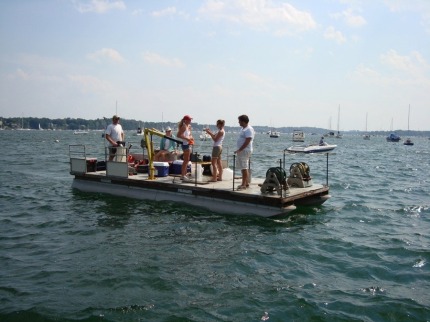
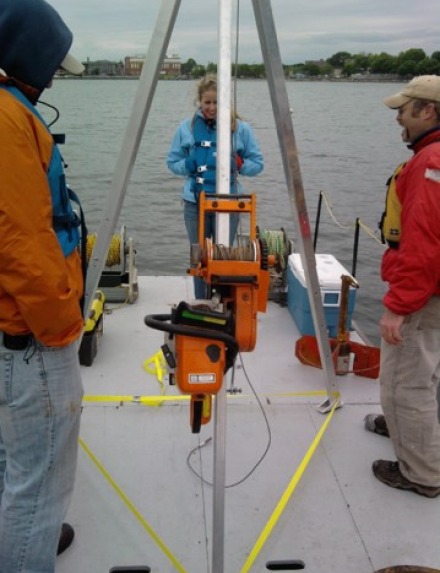
Multi-century record of anthropogenic impacts on an urbanized mesotidal estuary: Salem Sound, MA
In 2010-2011, we conducted research to reconstruct environmental conditions within Salem Sound and to compare these conditions to the well-documented history of the region. Through the retrieval of several Kullenberg cores and the use of a multi-proxy approach, we found the stratigraphic record yielded a record of human activity since European contact that is consistent with the historic record. Further, we were able to document the recovery of the system associated with conservation practices. We conclude that modern conditions in Salem Sound are improved over those experienced during previous centuries, however proxy data reveal significant differences between the modern conditions and those of pre-anthropogenic baseline conditions reconstructed from the older portion of the sediment record. We also replicated water quality testing that DMF had employed in 1997. Results showed a measurable improvement in water quality since South Essex Sewer District (SESD) was upgraded to secondary sewage treatment in 1998, which reduced the number of nutrients and organic matter entering the Sound.
Salem Sound Water Quality
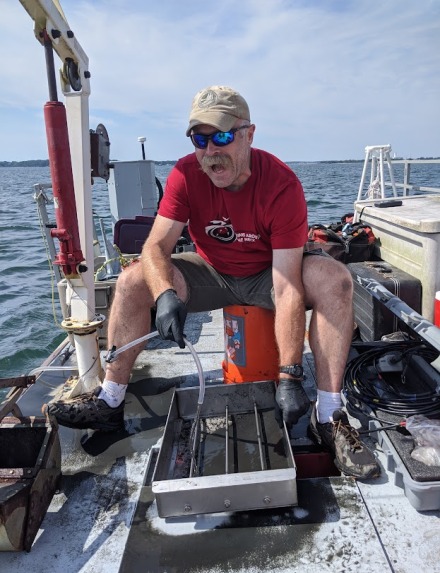
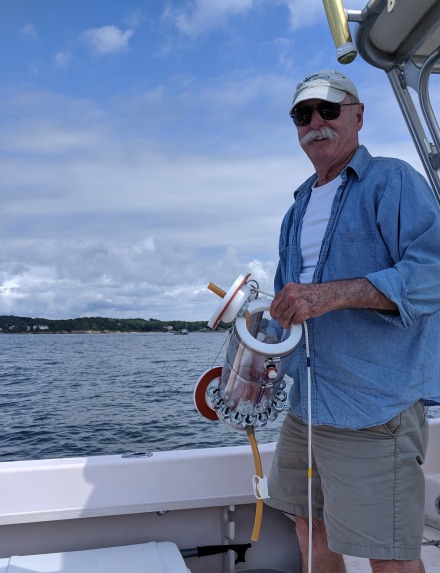
In 2019 and 2020, we collaborated with Salem Sound Coastwatch and MassBays in research funded by EPA (2019) and by NOAA Multipurpose Grant (2020). We collected data on water quality and seafloor condition to establish how nutrient loads affect the water quality and habitats of Salem Sound. In 2019, an autonomous vehicle, SeaTrac, was equipped with a sonde to collect temperature, salinity, dissolved oxygen, turbidity, pH, and chlorophyll continuously. In addition, grab samples of water were taken during both summers and analyzed. The data clearly show the difference in water chemistry from the freshwater of the Danvers River to Beverly Harbor and then the Sound. Phosphorus was highest in the Danvers River, near shore and at the bottom of Salem Harbor. Once again, data indicate that P is driving phytoplankton blooms and is the essential nutrient for plankton growth in Salem Sound.
Lakes in Western Maine
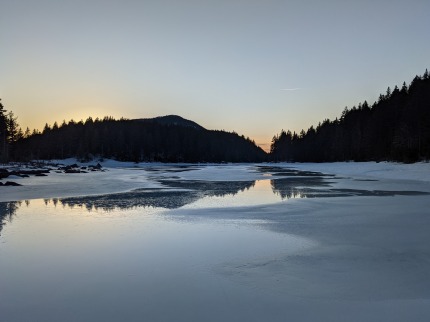
In 2022, Dr. Hubeny’s sabbatical research focused on the relationship between carbon sequestration and elevation. To better understand this relationship, we obtained gravity cores from a series of lakes in Western Maine ranging from 500ft to 3000ft in elevation. The area of each lake, sedimentation rate, sediment density and carbon content will be analyzed or calculated, from which carbon sequestration (as carbon stored per year) can be calculated. The correlation between these rates and the lakes’ elevations will illuminate our research questions.
Sluice Pond
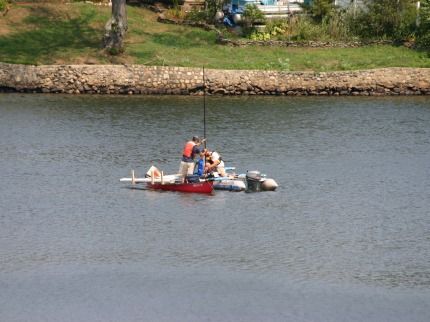
- The paleohydrology of Sluice Pond, NE Massachusetts, and its regional significance The 1755 Cape Ann Earthquake Recorded in Lake Sediments of Eastern New England: AnInterdisciplinary Paleoseismic Approach
- The influence of dissolved oxygen on dinoflagellate cyst distribution across Sluice. Pond, a meromictic lake in NE Massachusetts, USA
- Natural and cultural eutrophication of Sluice Pond, Massachusetts, USA, recorded by algal and protozoan microfossils
Dr. Hubeny has been studying Sluice Pond since 2008 in collaboration with a varied team of international scientists and have published four articles so far in peer-reviewed journals about this pond. These publications explore Sluice Pond through many different lenses, from geophysics to biogeochemistry, using proxies from pollen and dinoflagellates to stable isotopes.
Seismic, pollen, stable isotope and lithologic stratigraphy of Sluice Pond were investigated to reconstruct local climate conditions from the latest Pleistocene to present. This led to the presentation of a new lake-level curve, constrained by acoustic reflectors and well-dated sediment cores and corroborated with pollen-based, transfer-function-derived reconstructions of temperature and precipitation. This new record of Holocene regional hydroclimate variability added to the spatial coverage of existing reconstructions and helped constrain forcings associated with such variability.
Multiproxy data of a well-dated core from Sluice Pond contained a mass wasting deposit of possible seismic origin, likely the 1755 Cape Ann earthquake, the most damaging historic earthquake in New England. This research showed that strong earthquakes in New England can leave a record in the organic-rich sediments of lakes. Such lakes are abundant in this formerly glaciated terrain and can be used to establish paleoseismic records for a region where the recurrence interval of large, potentially damaging earthquakes is mostly unknown.
Assemblages of dinoflagellate cysts in sediments of Sluice Pond were compared with measurements of water quality and sediment geochemistry and with testate amoeba and tintinnid assemblages. Ecological and taphonomic factors were considered and used to reconstruct palaeoenvironments from these microfossil assemblages.
Microfossil studies identified two environmental perturbations that impacted algal and protozoan communities: (1) natural eutrophication and water column mixing driven by the mid-Holocene drought and (2) cultural eutrophication, increasing bottom water anoxia, and toxicity accompanying human settlement. Sluice Pond cores show an abundant and diverse record of dinoflagellate cysts spanning 11,400 years.
Walden Pond
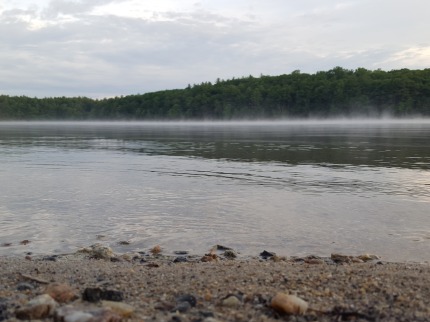
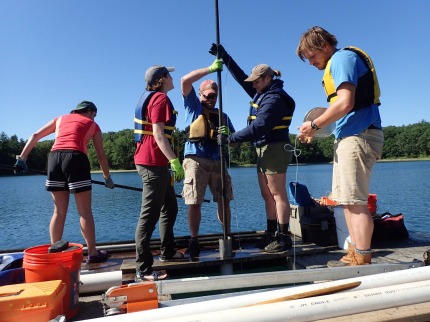
Sedimentation patterns in the three basins of Walden Pond, Concord, Massachusetts – A multiproxy approach to decipher environmental trends, anthropogenic impacts, and regional events of the last 800 years (in progress)
Starting in 2015, a series of gravity and Livingstone cores were taken from Walden Pond in Concord, MA. Dr. Hubeny again worked with a team of varied international scientists to study these cores using multiple proxies, from microfossils to heavy metal contaminants.
Six gravity cores taken in 2015 show recent shifts in the ecological condition of Walden Pond, MA, are of potentially wide interest due to the lake's importance as a cultural, historical, and recreational resource in addition to its scientific value as an indicator of local and global environmental change. Algal microfossils in six sediment cores document changes in hydroclimate and trophic status of the lake during the last 1800 years and extend two previous sediment core records of shorter length. These findings suggest that, although mitigation efforts have curtailed anthropogenic nutrient inputs to Walden Pond,
the lake has not returned to the pre-impact condition described by Henry David Thoreau and may become increasingly vulnerable to further changes in water quality in a warmer and possibly wetter future.
Using the same gravity cores, we applied a multi-proxy approach to identify a unique set of conditions for each of Walden Pond’s three lake basins and to develop a more comprehensive landscape evolution model for eastern Massachusetts for the last 800 years. While there are differences between the basins in terms of organic matter, sedimentation rates, and records of shoreline processes, the three basins of Walden Pond show a remarkably consistent story of landscape change over the last 800 years with four distinct time periods: pre-European, early European, the industrial era, and modern-day.
Duxbury, Kingston, and Plymouth Harbors
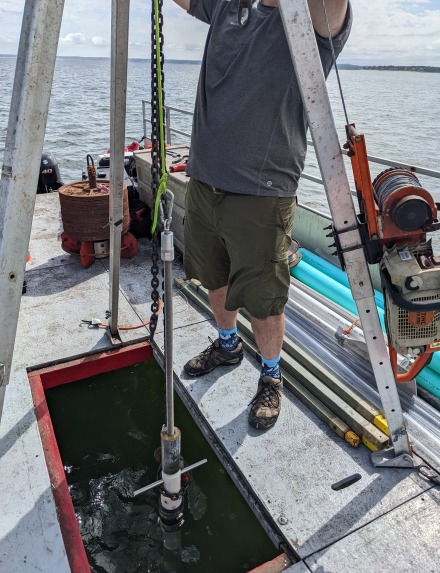
We have received several grants from MassBays National Estuary Program (NEP) to study the loss of eelgrass in Duxbury, Kingston, and Plymouth Harbors (DKP). The Division of Marine Fisheries (DMF), the Massachusetts Department of Environmental Protection (DEP), and USGS showed a 45% loss of eelgrass by 2014, and 52% loss by 2017 from levels in 1951. Seagrass loss is often correlated with habitat degradation, climate change, and direct physical impact. Over the past several years, indications have pointed towards several potential causes of eelgrass loss in DKP including excess nutrients from land-based discharges, physical damage from scouring by moorings, and physical impacts from weather changes and climate change, among others. The goal of this project is to conduct an analysis of sediment condition to better understand whether benthic conditions play a role in the observed changes. To answer these questions, the project first included a survey of water quality and sediment cores that, in addition to ongoing nearshore monitoring, started to provide a picture of overall conditions in DKP. Further research, including a higher-resolution sampling plan, is ongoing.
